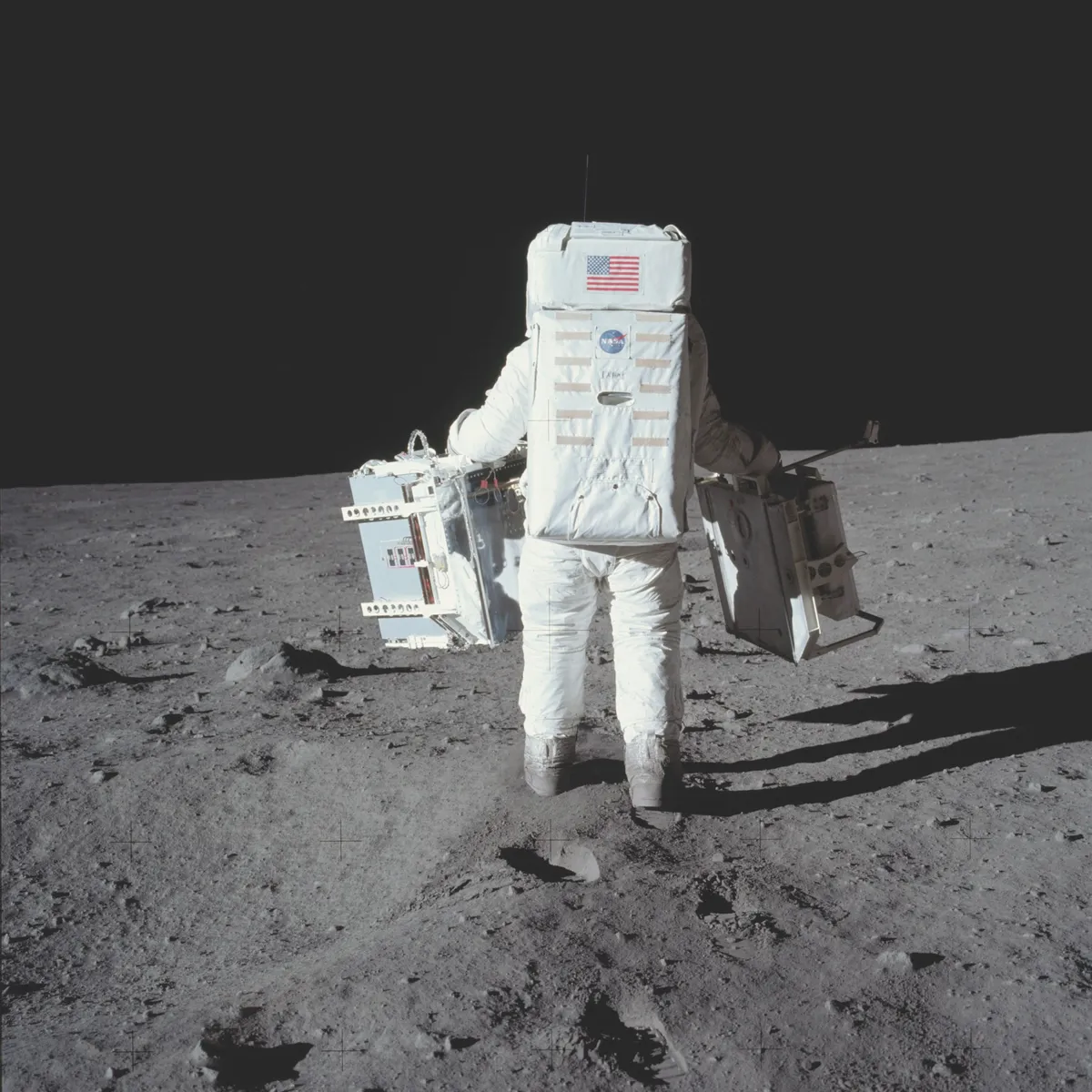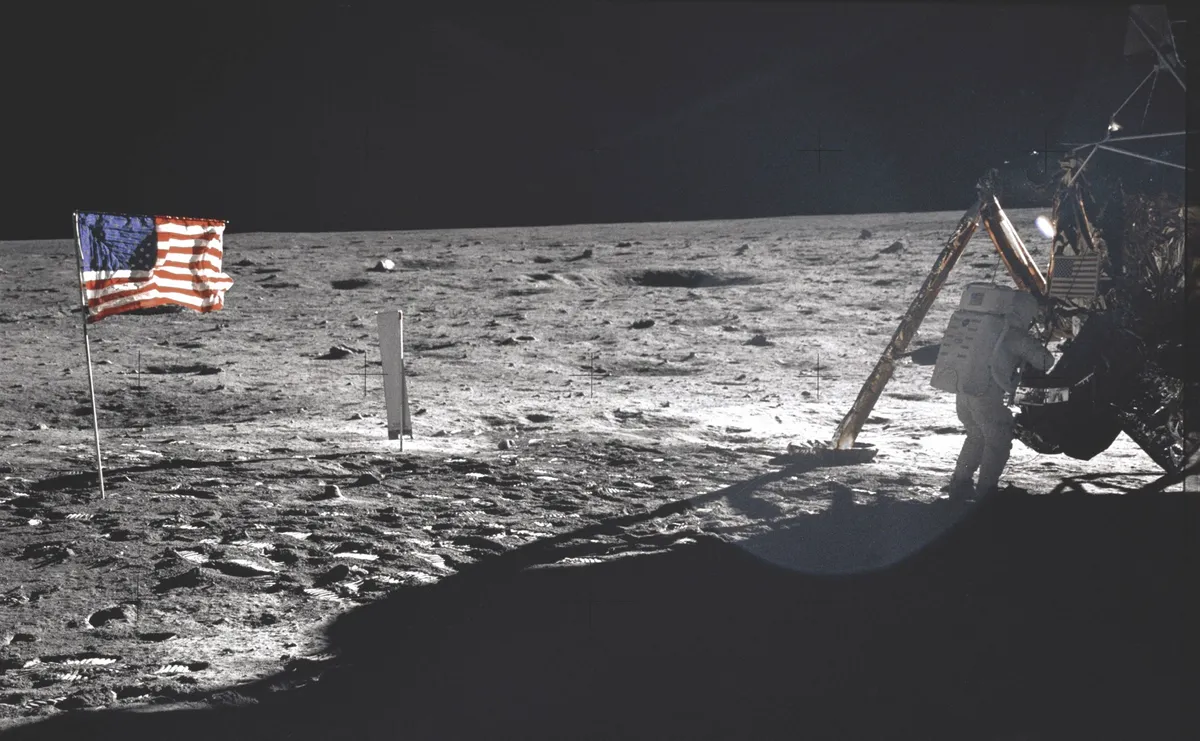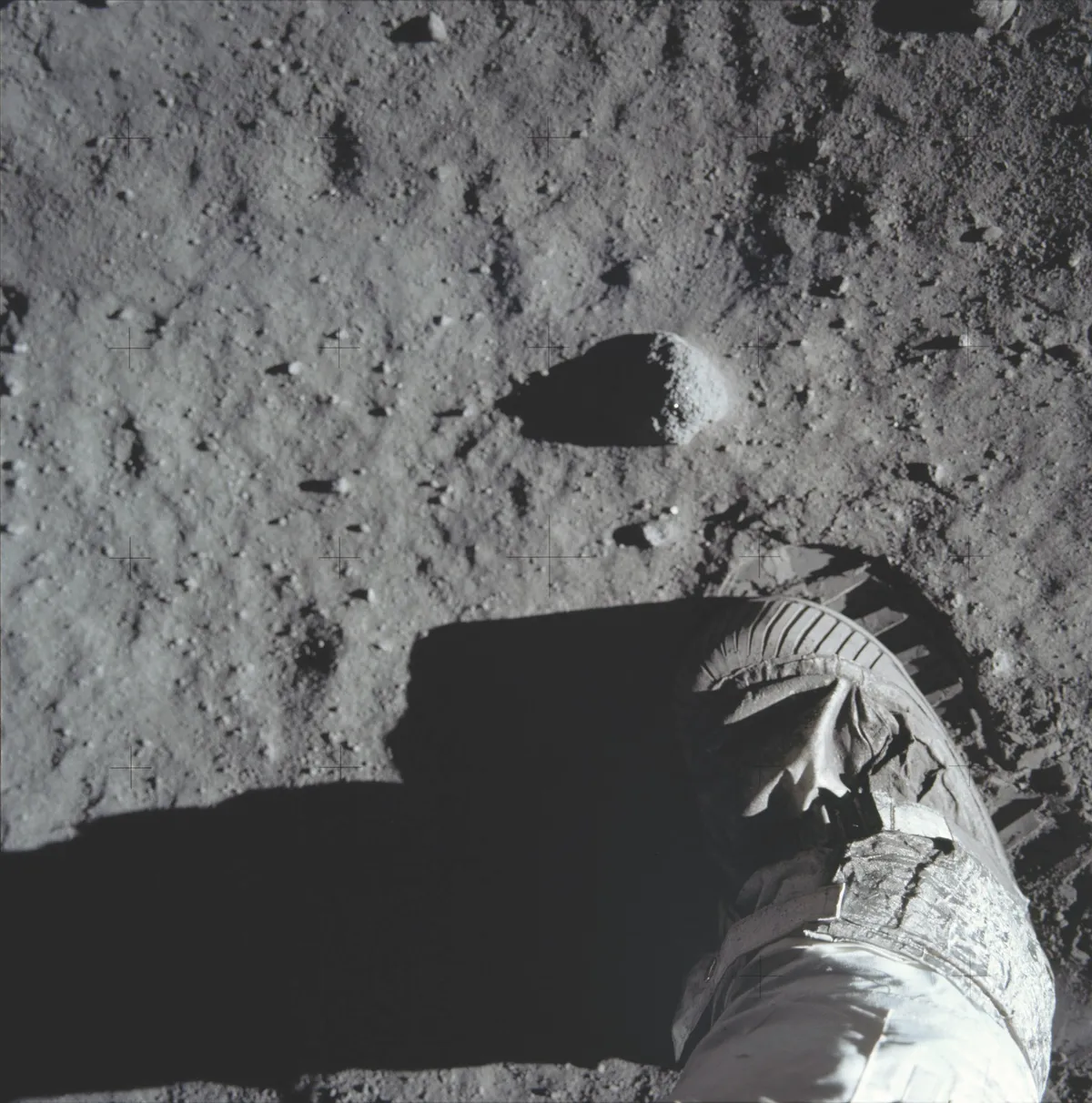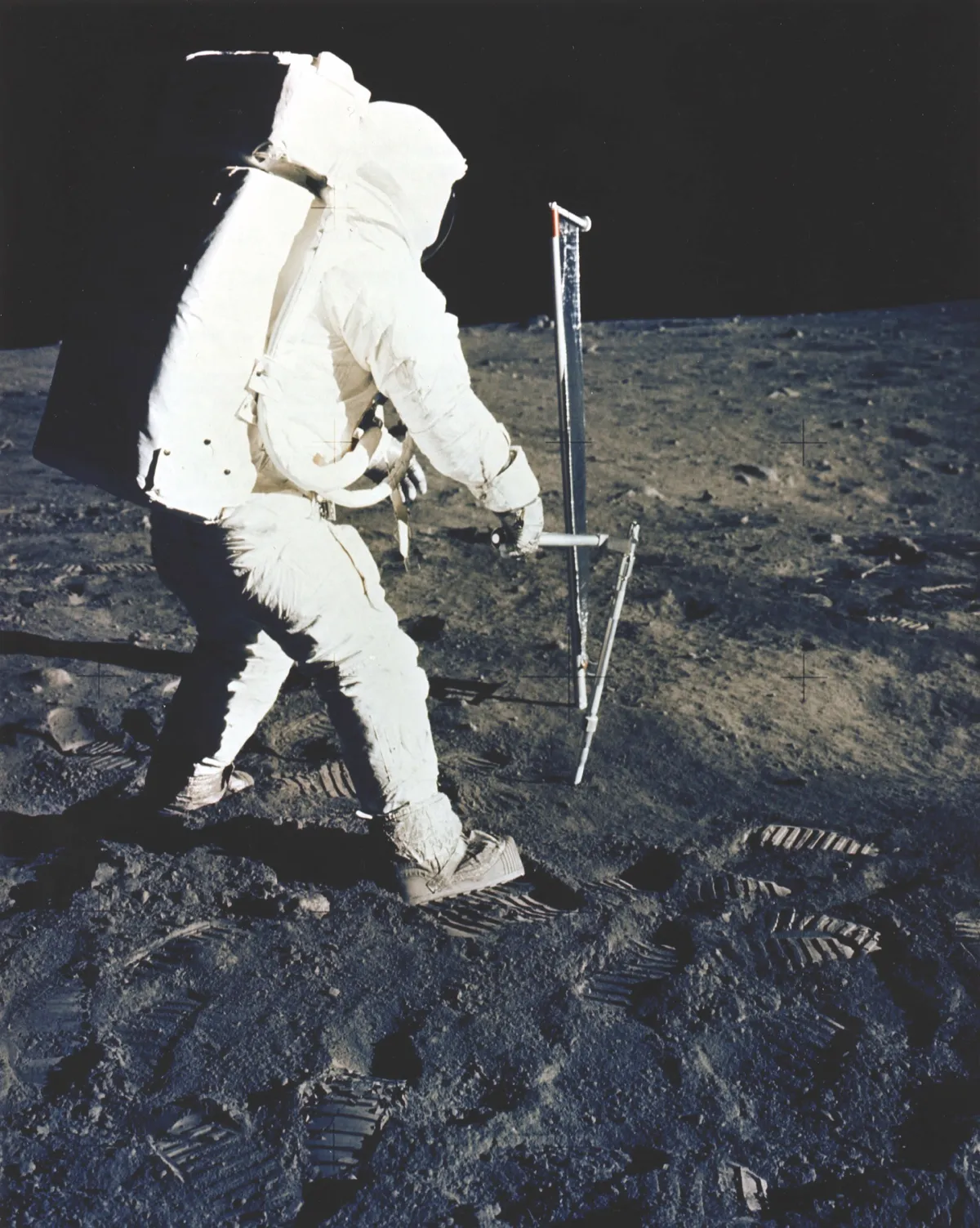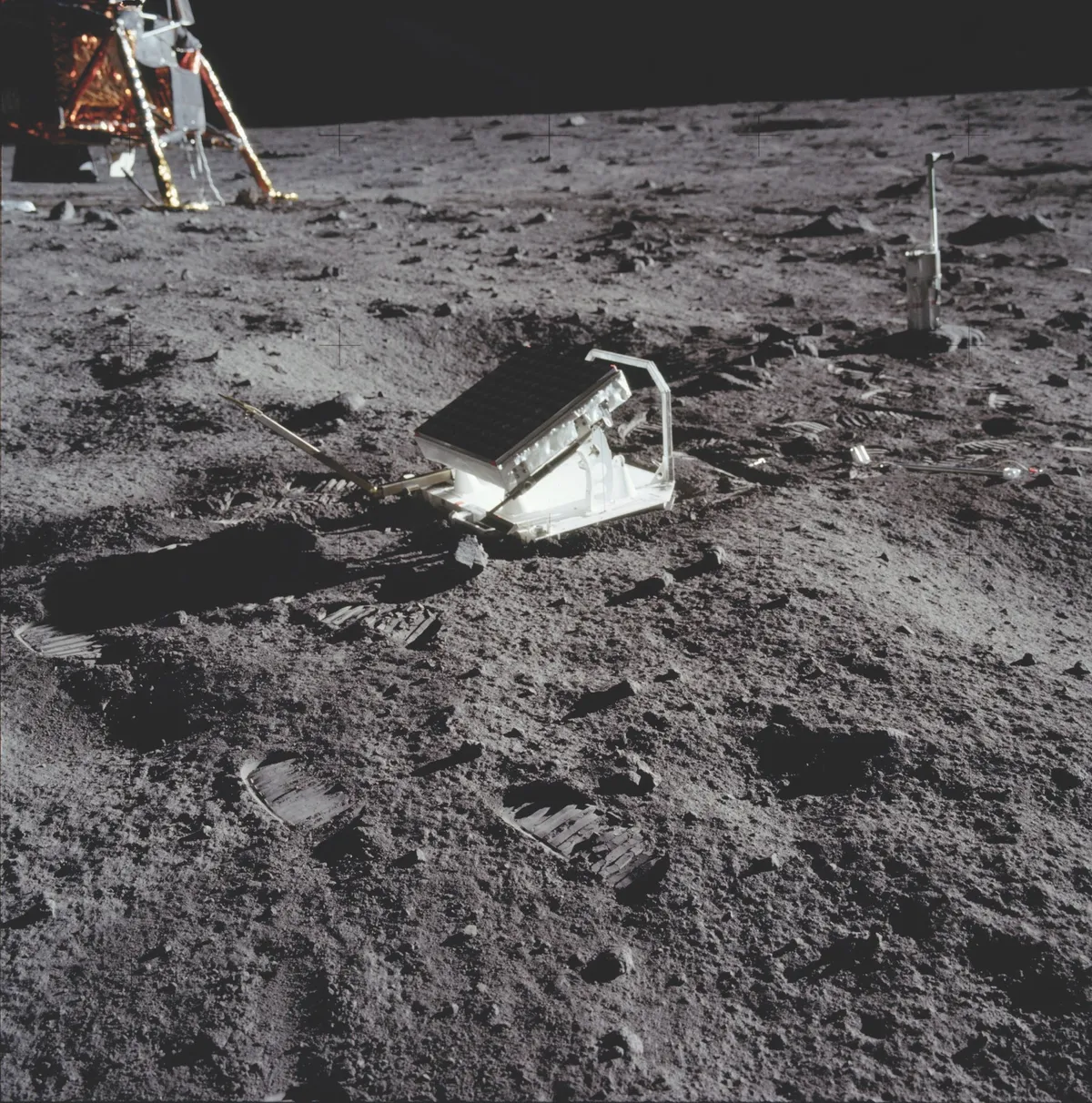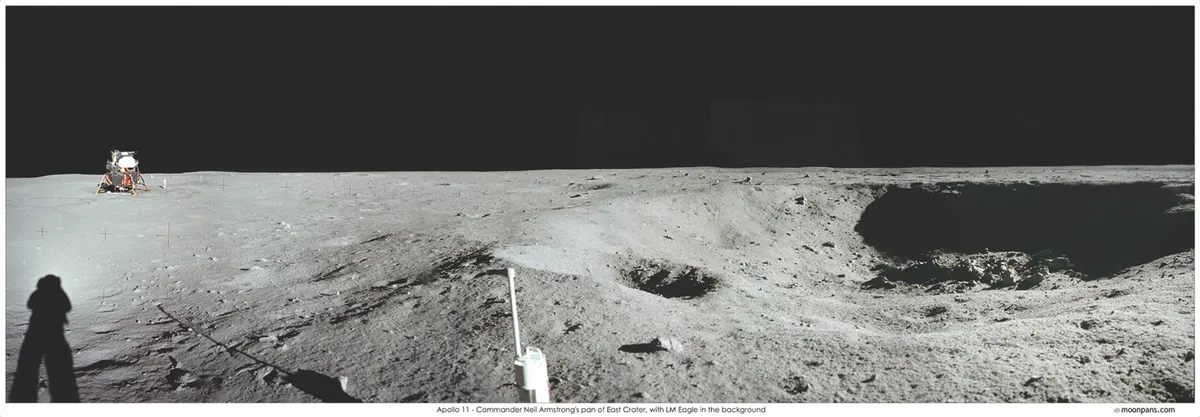Around 90 minutes into his moonwalk, Buzz Aldrin took this photo of the American flag planted in the lunar landscape. © NASA/JPL Reduced lunar gravity makes it easy for Aldrin to carry a pair of experiment packages for deployment. © NASA/JPL
Read more about the Apollo Moon landing:
Armstrong’s first photograph on the lunar surface, taken 23 minutes into the moonwalk, shows Eagle’s footpad and strut support, plus a white jettison bag full of rubbish from the lunar module. The bag was left on the surface to free up space in the cramped cabin. © NASA/JPL Neil Armstrong packs the samples of Moon rock he’s just collected into a specially sealed rock box in preparation for their return to Earth. Taken after just one hour and 24 minutes into their explorations of the lunar surface, this photo is one of the few that show Armstrong on the Moon. © NASA/JPL
Listen to brilliant podcasts about the Apollo Programme:
Half an hour after stepping out of the lunar module, Armstrong captures shots of his crew-mate Aldrin making the same feet-first exit onto the Moon. It takes Aldrin three minutes to make it to the bottom of the lunar module’s ladder. © NASA/JPL Aldrin photographed the impression his spacesuit’s boot left in the lunar surface so that experts back home could study its soil mechanics. © NASA/JPL
Read more about the Apollo 11 crew:
The solar wind experiment measured the abundances and isotopes of solar wind particles, particularly the noble gases helium, neon and argon. It was made of very thin aluminium foil. Solar wind particles travelling at hundreds of kilometres a second penetrated the foil and got trapped. The experiment was set up about six metres from the lunar module and packed up after 77 minutes on the surface.The foil was analysed in a mass spectrometer back on Earth and revealed a more detailed picture of the solar wind’s particles than earlier remote experiments had. © NASA/JPL This first laser ranging reflector to be placed on the Moon was designed to monitor the distances between stations on Earth and the Apollo 11 landing site. The data has been used in studies of gravity, relativity and lunar geology. Made up of 100 small, fused silica cubes that reflect laser light directly back to its source, the reflector was placed about 14m from the lunar module. The first measurements were made at Lick Observatory on 1 August 1969 and are still being taken today. © NASA/JPL
Read more about the preparations for the Apollo space programme:
Around 60m east of the lunar module, Armstrong decided he had gone far enough and stopped to take this panoramic shot. It shows the lunar module on the left and East Crater on the right. The crater is approximately 30m wide and 4m deep. © NASA/JPL Four very sensitive seismometers measured moonquakes in the lunar crust or vibrations caused by meteorite impacts. Any relative motion was recorded as an electrical impulse and sent directly to Earth. Power came from two solar panels and a thermal shroud protected it from the extremes changes of temperature. The 21-day experiment found that seismic events on the Moon are less frequent than earthquakes on Earth. It also recorded erosion events, thought to be landslides along the walls of relatively young craters. © NASA/JPL Follow Science Focus onTwitter ,Facebook , Instagram and Flipboard

